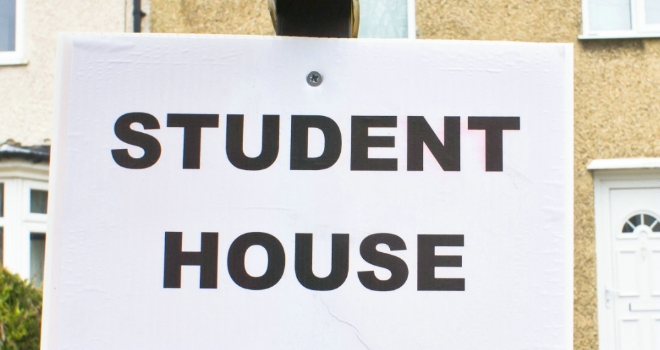
There’s huge demand for houses of multiple occupancy (HMO’s) across cities with bustling student populations and, consequently, there’s also big opportunities for buy-to-let landlords looking to purchase at auction.
With undergraduate applications hitting record numbers; UCAS received 592,290 applications before its January deadline this year , it doesn’t look like demand for these properties is going to fall any time soon. In the context of this persistently strong demand, buy-to-let landlord not only benefit from the rent they collect from their tenants, but can also see the values of their properties appreciate.
So with current and prospective buy-to-let landlords in mind, I’ve put together some pointers when it comes to investing in student property.
1. Find highly-populated student areas to invest in
The first thing to think about before investing in student property at auction is where to buy the property. You might have seen that the University of Manchester has the highest student population in the UK, with 37,925 students , but that doesn’t tell you whereabouts in the city the major student areas are.
Knowing this is important when it comes to making the right choice of property at auction. After all, it’s no good finding the right city if you end up investing in a property in an area devoid of the students you want to let to.
2. Be aware of council regulations which may affect housing
An important consideration for all buy-to-let landlords is to consider regulations which may apply to property in a particular area. For example, you may have decided to make a buy-to-let investment in Exeter and intend to rent your property to students in the area. You’ve done your research and found that there is strong demand for student property and believe that the area you’ve chosen is a fairly safe bet.
In this case, buying a property to let to students in Exeter might seem like a perfectly sound investment. However, due to the imposition of an Article 4 Direction by the council, you could find yourself in a position where the ability to do this has been restricted.
Briefly, an Article 4 Direction under the General Permitted Development Order is one which allows a local planning authority to withdraw specified development rights in a certain area.
When this happens, as it has in the north east of Exeter to restrict the growth of HMO’s typically used by students , buy-to-let landlords may find themselves in a position where they cannot convert a property they have bought at auction into a HMO.
Clearly, it’s very important to have information on council regulations before making a buy-to-let investment. Failing to do so could see investors landed with properties they cannot use for their desired purpose – not a good position to be in. The Article 4 Direction is being used by some councils to control problems with noise, parking and litter in particular areas, so what’s happening in Exeter is not an isolated incident.
The intense demand for student property offers a great opportunity for buy-to-let investors and the auction house provides an ideal venue to find buy-to-let properties at attractive prices.
However, there are key considerations to bear in mind when exploring the buy-to-let market for student property. Get your research right and entering into the student rental sector could be a winning investment.





